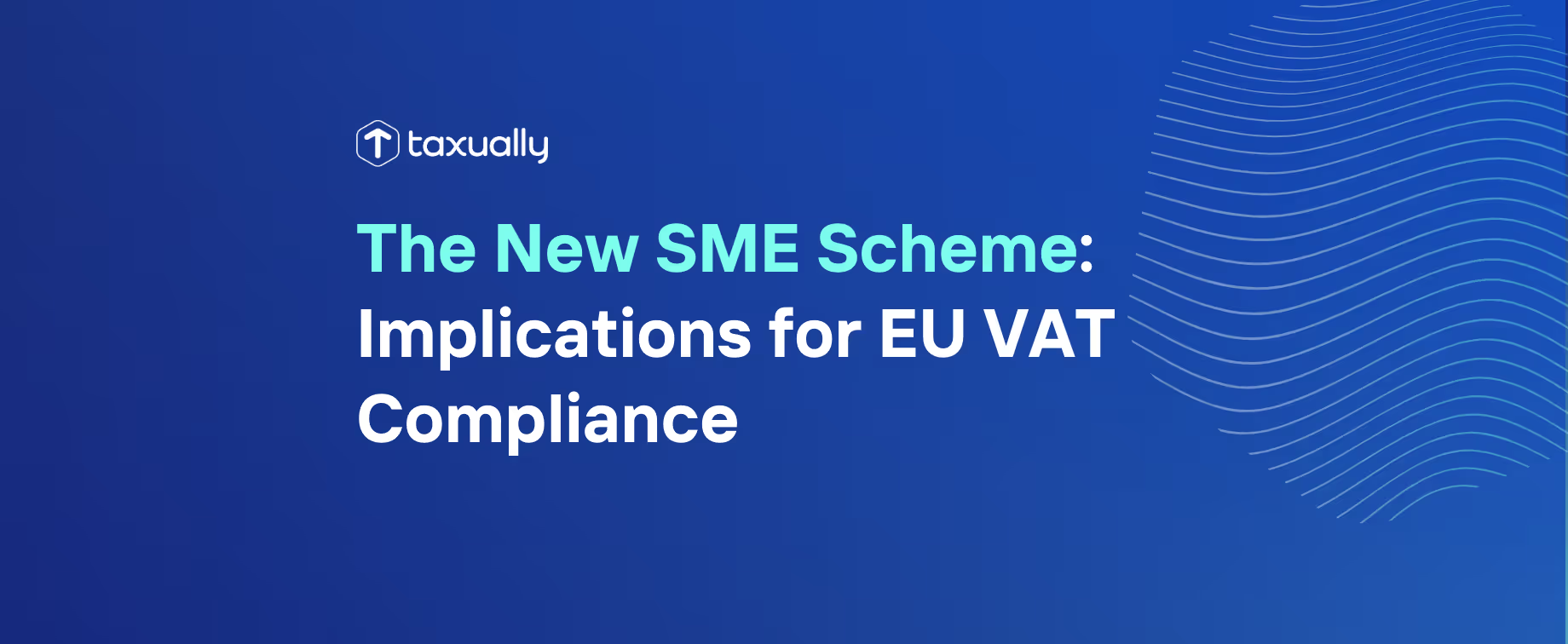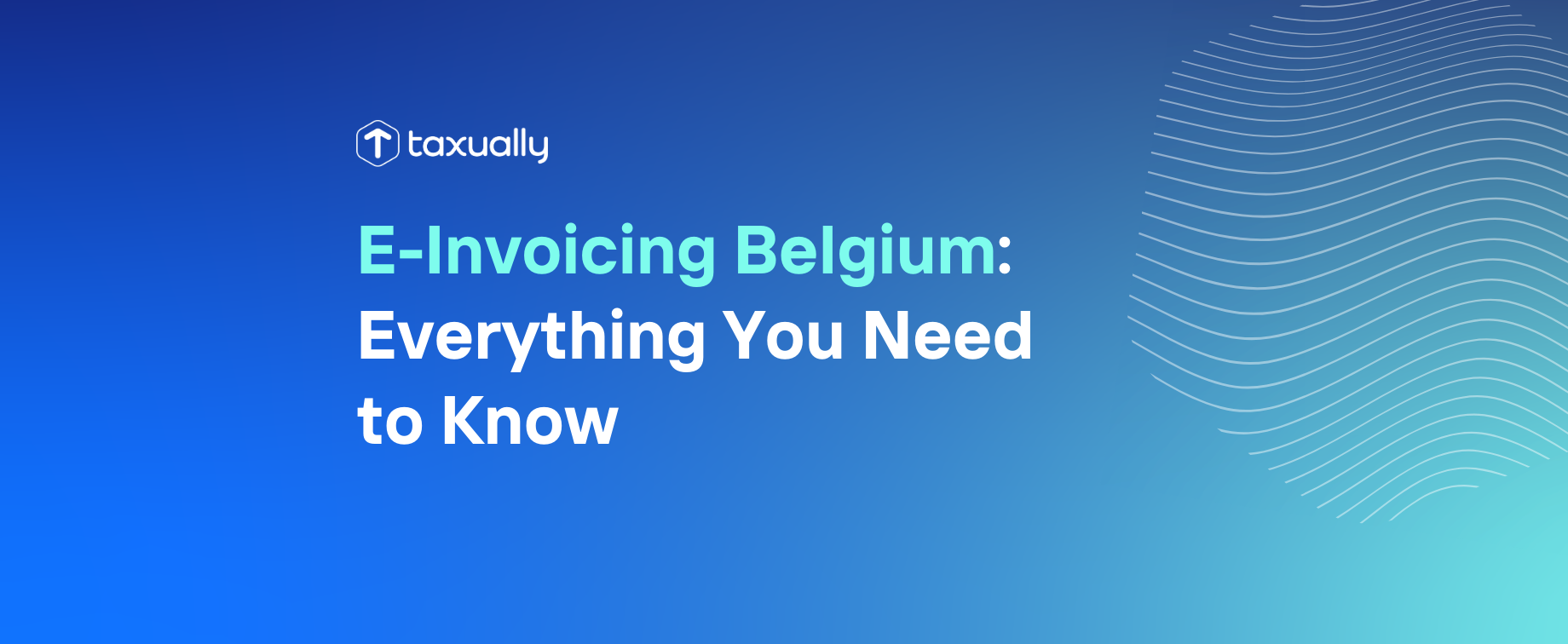Key takeaways
- Standardized thresholds with cross-border relief: From January 1, 2025, SMEs with under €100,000 in EU-wide turnover can benefit from a unified €85,000 VAT exemption—even when trading across borders.
- New compliance steps for eligible businesses: SMEs must stay below national thresholds, notify their home country, and use an ‘EX’-suffix VAT ID to access the exemption.
- Implications beyond SMEs: Larger and non-EU businesses must adapt to changes in invoice handling and VAT treatment, especially where exempt SMEs are involved.
SMEs (small and medium-sized enterprises) make up 99% of all businesses in the EU, making them an integral part of Europe’s economy. The European Union’s SME scheme, which was introduced to ease the disproportionate VAT burden faced by SMEs, is undergoing significant amendments. Scheduled to take effect on January 1, 2025, these changes are expected to have a significant impact on SMEs, especially those businesses engaged in cross-border activities within the EU.
Understanding the revised SME Scheme
The upcoming amendments introduce a new dimension of flexibility and inclusion, primarily through the addition of cross-border exemptions. Historically, the SME scheme allowed member states to set their VAT exemption thresholds, resulting in a wide range of limits, from €10,000 in Greece to €85,000 in Italy. Under the revised framework, the maximum threshold will be standardized at €85,000. However, the more notable update is the extension of eligibility to SMEs based in one member state but operating across borders.
For a business to qualify for this cross-border exemption, it must not only stay below the €100,000 annual turnover across all EU states but also must not exceed the VAT threshold of €85,000 in any specific member state where it operates. This dual condition ensures that the scheme's benefits are targeted at truly small-scale operations, potentially reducing their VAT compliance costs by up to 18% annually.
The impact on domestic and cross-border transactions

The revisions aim to harmonize the VAT system across the EU, but they also present new challenges and opportunities. For instance, businesses that qualify for the SME scheme may now choose not to charge VAT in their home country while still needing to collect VAT on sales in other member states if they exceed the local thresholds. This flexibility allows businesses to optimize their tax positions according to their operational footprints.
Also, the requirement for businesses to notify their home member state and obtain an identification number ending with 'EX' adds a layer of administrative duty. It is, however, a necessary step to ensure transparency and proper monitoring of the scheme.
Broader implications for EU and Non-EU businesses
While the SME scheme is a boon for EU-established small businesses, its ripple effects extend to larger enterprises and non-EU entities. The increase in the maximum exemption threshold could lead participating SMEs to opt out of VAT, affecting the input tax calculations of their business customers. Large businesses may need to adjust their accounting systems to accommodate invoices from exempt SMEs, which could no longer include VAT.
Moreover, the classification of small businesses without a VAT identification number under the new scheme could lead to complexities in determining whether they should be treated as businesses or consumers, particularly in the realm of digital services. This distinction is crucial as it affects whether VAT should be charged at the point of sale.
Conclusion
As we edge closer to the implementation of the updated SME scheme, it's clear that its impact will be felt across the spectrum of businesses operating within the EU. The scheme not only promises to reduce VAT compliance burdens for small enterprises but also challenges larger businesses and tax professionals to adapt to a changing regulatory environment.
For businesses both inside and outside the EU, staying informed and preparing for these changes is paramount. As January 2025 approaches, proactive engagement with tax advisors and continuous monitoring of legislative updates will be key to navigating the new VAT landscape effectively.
Do you need help with your VAT compliance? Book a free call with one of our VAT experts to find bespoke solutions for your business, optimize your VAT costs, and reach millions of new potential customers.
Frequently asked questions
New Year's Day - 1/1/2024Memorial Day - 5/27/20244th of July - 7/4/2024Labor Day - 9/2/2024Thanksgiving Day - 11/28/2024Day after Thanksgiving - 11/29/2024Christmas Eve - 12/24/2024Christmas Day - 12/25/2024
What is the new SME VAT scheme in the EU?
It’s a revised VAT exemption framework taking effect on January 1, 2025, allowing eligible SMEs to benefit from a standardized €85,000 exemption—even when trading across borders within the EU.
Who qualifies for the cross-border VAT exemption?
SMEs with under €100,000 in total EU turnover and no more than €85,000 in any single EU member state may qualify.
What are the new compliance requirements?
Eligible SMEs must notify their home member state and obtain a VAT identification number ending in 'EX' to benefit from the exemption.
How will this impact larger or non-EU businesses?
Larger companies may need to adjust invoicing and input VAT processes, especially when dealing with exempt SMEs who no longer charge VAT.
Does this mean SMEs are VAT-free in all EU countries?
No. The exemption applies only if both the EU-wide and per-country thresholds are met. SMEs exceeding local thresholds must register and charge VAT in those states.



















